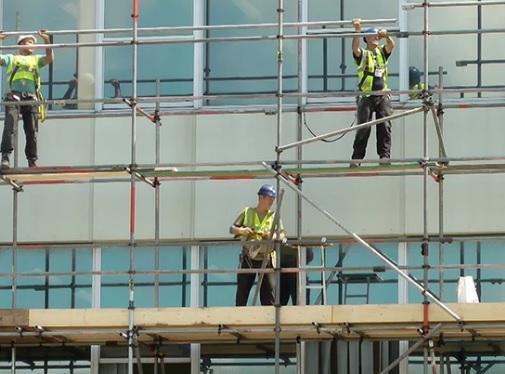Supported scaffolding is a common temporary platform used in industrial and construction environments. While scaffolding can provide many benefits, it also poses significant safety risks if not used properly. In this article, we’ll provide some helpful advice to businesses on ensuring the safe and effective use of supported scaffolding in industrial and construction environments.
First and foremost, it’s important to ensure that all employees receive proper safety training. This includes training on how to properly assemble, disassemble, and use supported scaffolding, as well as how to use personal protective equipment (PPE) appropriately. It’s also a good idea to conduct regular safety meetings and drills to reinforce safety protocols and procedures.
One of the most effective ways to prevent accidents and injuries related to supported scaffolding is using only high-quality, certified scaffolding products. This means purchasing scaffolding from reputable manufacturers that meet industry standards and using only properly maintained and inspected scaffolding.
Proper assembly and disassembly of scaffolding are also crucial. Ensure all employees are trained to properly assemble and disassemble scaffolding and follow all manufacturer instructions and guidelines. It’s also a good idea to conduct regular inspections of the scaffolding to ensure that it is in good working condition and free of defects.
It’s also essential to use appropriate fall protection equipment when working on supported scaffolding. This may include harnesses, lanyards, and other fall protection devices, as well as guardrails and other safety barriers.
Finally, it’s important to follow proper load-bearing guidelines when using supported scaffolding. Never exceed the recommended load capacity for the scaffolding, and make sure that all materials and equipment are securely attached to the scaffolding.
In conclusion, supported scaffolding can provide many benefits in industrial and construction environments, but it also poses significant safety risks. By providing proper safety training, using high-quality scaffolding products, following proper assembly and disassembly procedures, using appropriate fall protection equipment, and following load-bearing guidelines, businesses can ensure the safe and effective use of supported scaffolding and create a safer work environment for their employees.
Here are ten tips to help businesses ensure the safe and effective use of supported scaffolding in industrial and construction environments:
- Provide proper safety training to all employees: This includes training on how to properly assemble, disassemble, and use supported scaffolding, as well as how to use personal protective equipment (PPE) appropriately.
- Use only high-quality, certified scaffolding products: Purchase scaffolding from reputable manufacturers that meet industry standards and use only properly maintained and inspected scaffolding.
- Follow proper assembly and disassembly procedures: Make sure that all employees are trained on how to properly assemble and disassemble scaffolding and follow all manufacturer instructions and guidelines.
- Conduct regular inspections of the scaffolding: Check for defects or other issues that could compromise the safety of the scaffolding.
- Use appropriate fall protection equipment: Provide employees with harnesses, lanyards, and other fall protection devices, as well as guardrails and other safety barriers.
- Follow load-bearing guidelines: Never exceed the recommended load capacity for the scaffolding, and make sure that all materials and equipment are securely attached to the scaffolding.
- Use caution when working on or near supported scaffolding: Be aware of the potential hazards associated with scaffolding, and take appropriate precautions to avoid accidents and injuries.
- Use the correct lifting techniques: Follow safe lifting practices when moving materials or equipment on or off supported scaffolding.
- Secure loose materials and equipment: Ensure all materials and equipment are securely attached to the scaffolding.
- Maintain a clean and organized worksite: Keep the area around the scaffolding free of clutter and obstructions to reduce the risk of accidents and injuries.
In conclusion, supported scaffolding can provide many benefits in industrial and construction environments, but it also poses significant safety risks. By following these tips and taking the necessary precautions, businesses can ensure the safe and effective use of supported scaffolding and create a safer work environment for their employees.
Do you need Online Construction Safety Training?
Try a free demonstration of Supported Scaffolding Safety in Industrial and Construction Environments.










